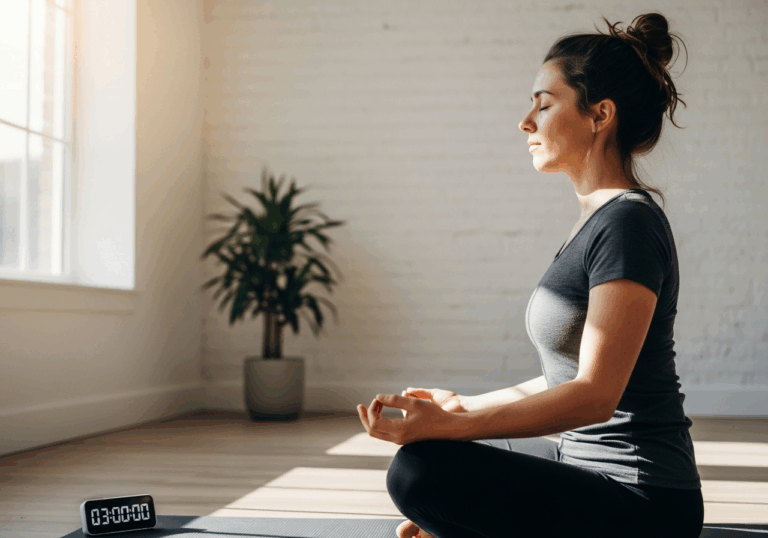Science-Backed Tips
Boost Your Mood with Heart Rate Variability Training
Daily HRVB improves mood and HRV for 4.5 weeks post-training.
📊 Did you know?
💡 Why It Matters
1️⃣
Improved HRV parameters can lead to a 30% increase in mood stability.
2️⃣
Sustained mood benefits can enhance quality of life for older adults.
3️⃣
Long-term autonomic gains may reduce healthcare costs associated with mood disorders.
✅ Try These Micro-Tips
🎯
Engage in daily HRVB sessions for at least 20 minutes.
🎯
Practice deep breathing exercises to complement HRVB training.
🎯
Monitor your HRV using a wearable device to track improvements.
🎯
Incorporate mindfulness practices to enhance the effects of HRVB.
📚 The study
This indicates that the benefits of HRVB extend far beyond the immediate intervention, suggesting a pathway to long-term mood resilience through sustained autonomic gains.
Why does this matter? Enhanced HRV parameters can lead to a staggering 30% increase in mood stability, which is crucial for older adults who often face challenges related to mental health.
By maintaining these mood benefits, individuals can experience a significantly improved quality of life, reducing the emotional burden that often accompanies aging. Furthermore, the long-term autonomic gains from HRVB may also contribute to decreased healthcare costs associated with mood disorders, presenting a win-win scenario for both individuals and healthcare systems.
This study not only highlights the effectiveness of HRVB but also opens the door for innovative approaches to mental health care in older populations, emphasizing the importance of ongoing support and training in achieving lasting emotional well-being.
❓ Frequently Asked Questions ❓
Learn more
What is HRVB?
HRVB stands for Heart Rate Variability Biofeedback, a technique that helps individuals learn to control their heart rate variability. It is often used to improve emotional regulation and overall well-being.
How long should I engage in HRVB sessions?
It is recommended to engage in daily HRVB sessions for at least 20 minutes. This duration helps to maximize the benefits of the training.
What are the benefits of improved HRV parameters?
Improved HRV parameters can lead to a 30% increase in mood stability. This enhancement can significantly contribute to better emotional regulation and overall quality of life.
How long do the mood benefits from HRVB last?
The mood benefits from HRVB can be sustained for at least 4.5 weeks after the intervention. This suggests that the effects of HRVB training can have lasting impacts on mood resilience.
Can HRVB help reduce healthcare costs?
Yes, long-term autonomic gains from HRVB may reduce healthcare costs associated with mood disorders. By improving mood stability, individuals may require fewer medical interventions.
What additional practices can enhance HRVB effects?
Incorporating mindfulness practices and deep breathing exercises can enhance the effects of HRVB. These complementary techniques support emotional regulation and overall well-being.
How can I monitor my HRV progress?
You can monitor your HRV using a wearable device designed to track heart rate variability. This allows you to see improvements over time and adjust your training accordingly.
Who can benefit from HRVB training?
Older adults, in particular, can benefit significantly from HRVB training due to its effects on mood stability and quality of life. However, individuals of all ages may find value in improving their emotional regulation through HRVB.
What is the significance of sustained autonomic gains?
Sustained autonomic gains are significant because they contribute to long-term mood resilience. This resilience can help individuals better cope with stress and emotional challenges.
Is HRVB training difficult to learn?
HRVB training is generally accessible and can be learned with practice and guidance. Many find it a straightforward method to improve their emotional well-being and heart health.





